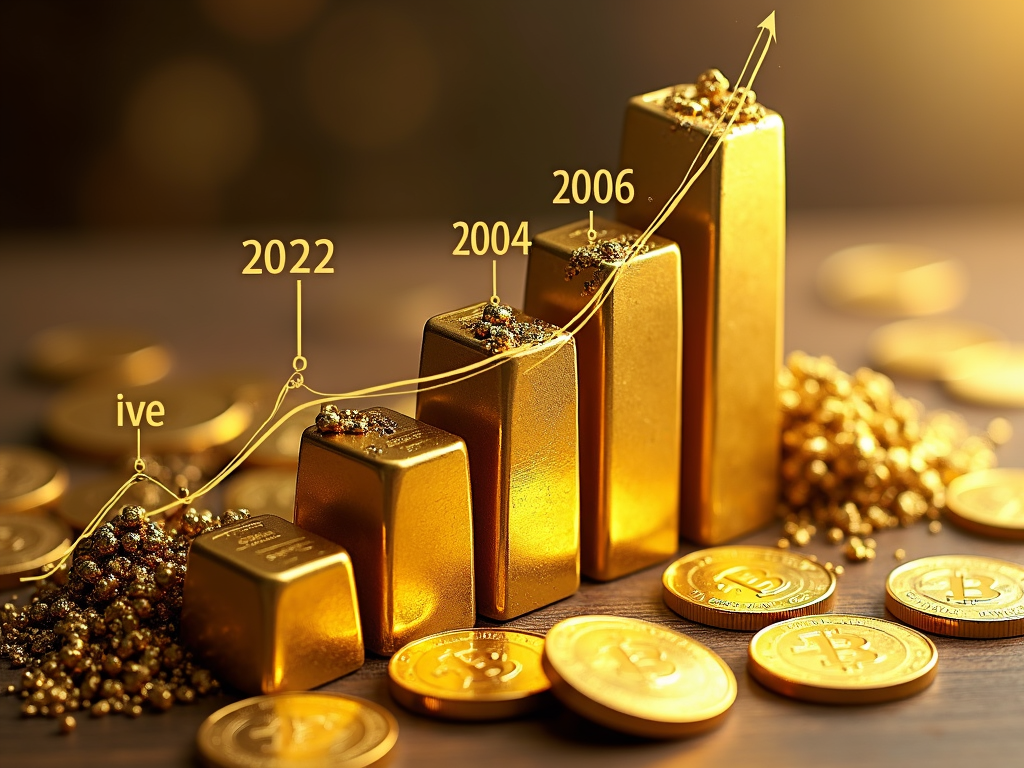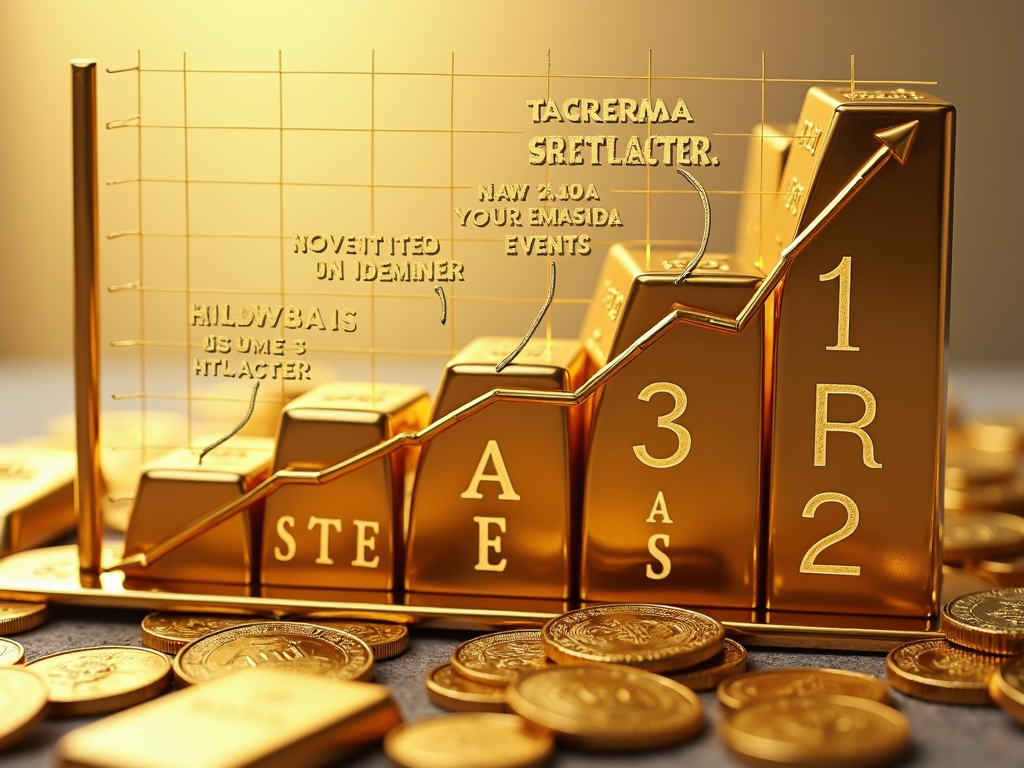The price of gold resembles an elegant roller coaster, captivating both investors and savers. After hitting historic lows in 2022, it has experienced a swift recovery, reaching new heights in 2023. By 2025, experts predict a further increase to $3,000 per ounce. This development is fueled by geopolitical uncertainties, inflation, and rising demand from central banks. In this article, we highlight recent developments and forecasts for the price of gold and show how investors can capitalize on these trends.
Gold Price 2023-2024: Risks and Opportunities in a Volatile World

In 2023, the price of gold embarked on a new ascent, driven by a combination of geopolitical uncertainties, increased demand from central banks, and global economic tensions. Emerging countries like China have intensified their efforts to achieve economic sovereignty by boosting their gold reserves. These measures aim to reduce dependency on dollar-denominated resources and create economic stability in a rapidly changing world.
The trend continued into 2024, fueled by ongoing geopolitical tensions that made gold an even more attractive safe haven. Political instabilities and uncertainties regarding global monetary policy have significantly impacted the market. By March 2025, the price of gold reached $2,986.90 per fine ounce and is quickly approaching the $3,000 mark anticipated by some experts.
Factors such as interest rate cuts could lead to a potential influx of capital into riskier asset classes, counterbalancing the outflow from the gold market. Furthermore, the political factor remains a dominant theme. Political changes or tensions could significantly influence the price of gold. However, the risks associated with the volatility of the gold market should not be overlooked; investors face an asset subject to strong fluctuations in value, which can often experience long phases of unexpected losses.
Despite these risks, gold as an asset offers numerous opportunities. Its potential as a diversification element is promising, as it can help minimize the overall risk of a portfolio. The role of gold as a hedge against inflation is considered central by many, although the historically adjusted performance for inflation appears rather modest. Nonetheless, forecasts for a rise in the price of gold in the coming years suggest a possible revival of this precious metal’s appeal to investors.
Among short-term forecasts, gold price is expected to rise to $2,361 in the first half of 2024, with a further peak of $2,483.74 towards the end of the year. In the medium and long term, up to 2026, prices could even rise to $3,200, and according to some optimistic predictions, could exceed $4,500 by 2030. These trends present investors with both opportunities and challenges, requiring a well-thought-out and informed investment strategy.
Gold Investments: Strategies for Growth and Protection in Turbulent Times

The price of gold has always been an indicator of the health of the global economy, a safe haven in times of uncertainty. In recent years, this trend has intensified. The value of gold reached new highs after a low in 2022 and is expected to continue rising through 2025. These developments make it more important than ever to choose the right investment strategy to take advantage of this precious commodity while minimizing risks.
Developments and Forecasts
The recovery of the price of gold in 2023 reflected a general uncertainty in global markets, exacerbated by geopolitical tensions and inflation. These factors continue to push prices upward, and many experts expect the gold price to exceed $3,000 per ounce by 2025. Macroeconomic elements such as a weaker dollar and interest rate cuts due to inflation make gold particularly attractive to many investors.
Direct vs. Indirect Investments
In searching for investment opportunities, investors must choose between direct and indirect investments in gold. Physical gold, for instance in the form of bars or coins, offers tangible security but requires expert custody. Gold mining stocks allow investors to benefit from price increases but come with operational and political risks.
Alternatively, gold ETFs represent a simpler way to participate, reflecting the price of gold while avoiding the need for physical storage. For experienced investors, futures and options are ways to speculate on price movements, but this requires a high degree of market knowledge and risk tolerance.
Risk Protection Through Diversification
An intelligent investment strategy includes diversification. This involves spreading the entire portfolio across different asset classes to minimize individual risks. Incorporating gold into such a strategy provides protection during uncertain times while allowing for the preservation of assets against inflation and currency risks.
Thinking Long Term
A source of inspiration for many investors is Warren Buffett’s strategy, which emphasizes that investing with patience and a long-term outlook is key to success. Investing in gold should occur with a patient mindset, a clear understanding of investment opportunities, and an accurate view of future market conditions. Only then can the opportunities that gold offers as a component of a diversified portfolio be fully exploited.